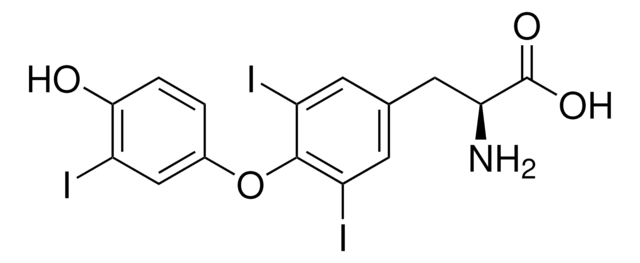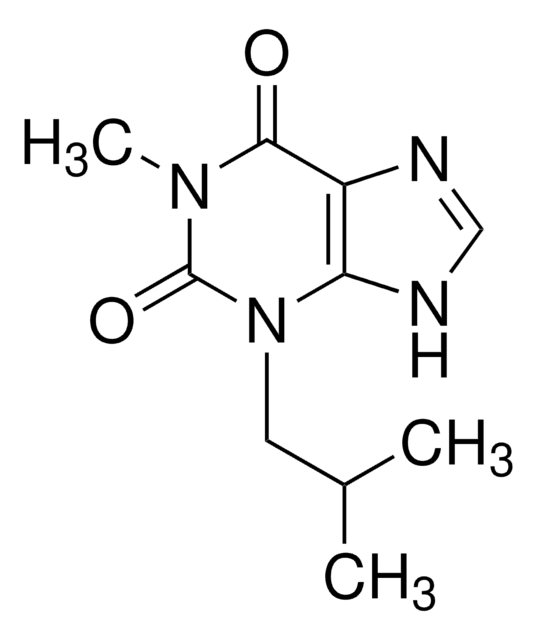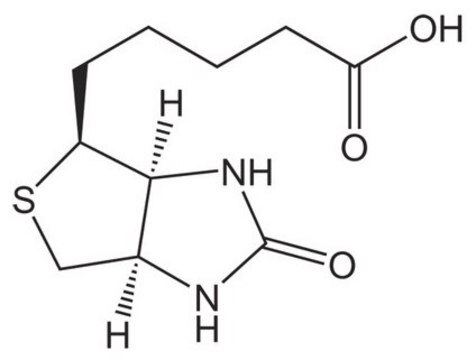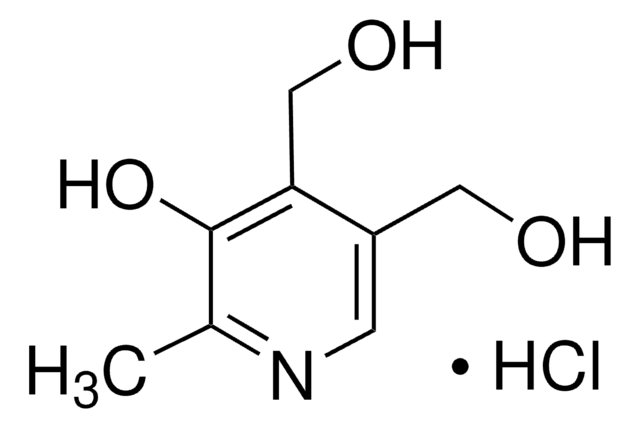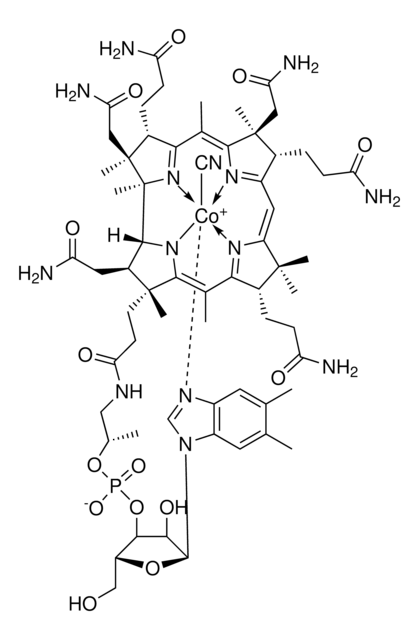B4501
Biotin
≥99% (HPLC), lyophilized powder
Synonym(s):
D-Biotin, Bios II, Coenzyme R, Vitamin B7, Vitamin H
About This Item
Recommended Products
biological source
synthetic (organic)
Quality Level
assay
≥99% (HPLC)
form
lyophilized powder
technique(s)
HPLC: suitable
color
white to off-white
mp
231-233 °C (lit.)
solubility
ammonium hydroxide: 50 mg/mL (2 M)
storage temp.
2-8°C
SMILES string
[H][C@]12CS[C@@H](CCCCC(O)=O)[C@@]1([H])NC(=O)N2
InChI
1S/C10H16N2O3S/c13-8(14)4-2-1-3-7-9-6(5-16-7)11-10(15)12-9/h6-7,9H,1-5H2,(H,13,14)(H2,11,12,15)/t6-,7-,9-/m0/s1
InChI key
YBJHBAHKTGYVGT-ZKWXMUAHSA-N
Looking for similar products? Visit Product Comparison Guide
General description
Application
- for culturing of oligodendrocytes.
- as a vitamin supplement for the growth of Bacillus species.
- for blocking endogenous biotin during immunohistology procedures.
Biochem/physiol Actions
Other Notes
Application
wgk_germany
WGK 1
flash_point_f
Not applicable
flash_point_c
Not applicable
ppe
Eyeshields, Gloves, type N95 (US)
Choose from one of the most recent versions:
Certificates of Analysis (COA)
Sorry, we don't have COAs for this product available online at this time.
If you need assistance, please contact Customer Support.
Already Own This Product?
Find documentation for the products that you have recently purchased in the Document Library.
Customers Also Viewed
Our team of scientists has experience in all areas of research including Life Science, Material Science, Chemical Synthesis, Chromatography, Analytical and many others.
Contact Technical Service
